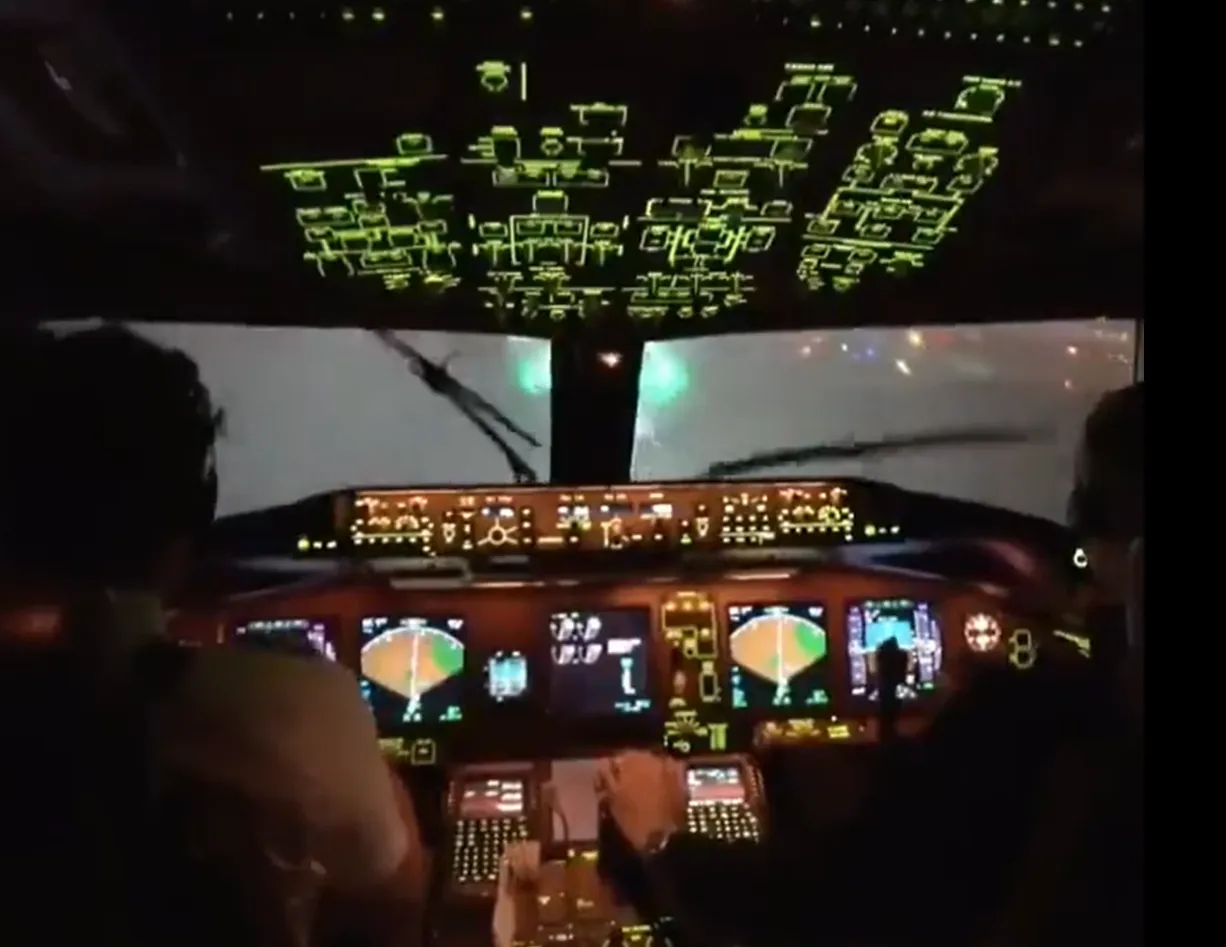
Cockpit View Of A Boeing 777 Landing In Driving Rain
Nov 11, 2022

The cockpit view of a Boeing 777 landing in driving rain showcases a dramatic scene filled with intensity and focus. Pilots are immersed in their instruments, monitoring altitude, speed, and approach angles while heavy rain pelts the windshield, creating a blurred landscape outside. The sound of the rain and wind adds to the atmosphere, emphasizing the challenges of visibility and control. As the aircraft descends through thick clouds, the runway lights flicker into view, guiding the pilots to a successful touchdown. The experience highlights the skill and precision required to navigate such adverse weather conditions safely.
The experience of landing a Boeing 777 in driving rain is both exhilarating and challenging. As pilots navigate through turbulent weather conditions, the cockpit view provides a unique perspective on the intricate processes involved in ensuring a safe landing. This article explores the cockpit view during such a landing, the technology employed, and the crucial steps taken by pilots to handle adverse weather conditions effectively.
Understanding the Cockpit Environment
The cockpit of a Boeing 777 is equipped with advanced avionics and displays that provide pilots with critical information. The primary instruments that pilots rely on during a landing in poor weather include:
| Instrument | Function |
|---|---|
| Primary Flight Display (PFD) | Shows speed, altitude, and attitude information. |
| Multi-Function Display (MFD) | Provides navigation and weather radar data. |
| Autothrottle | Maintains the desired thrust settings automatically. |
| Flight Management System (FMS) | Calculates optimal flight paths and approaches. |
These instruments are critical, especially when visibility is significantly reduced due to heavy rainfall. The Boeing 777 cockpit is designed to facilitate quick decision-making and ensure that pilots can maintain control even in adverse weather.
The Approach Phase
As the aircraft begins its descent, pilots utilize the weather radar displayed on the MFD to assess the intensity and extent of the rain. The radar helps in identifying patches of turbulence and areas with low visibility. Here, the pilots will make adjustments to the approach path as necessary. They may consider factors such as:
- Wind Direction: Understanding wind shear and how it affects the aircraft's stability.
- Runway Condition: Wet runways can significantly impact landing distance and braking performance.
- Aircraft Configuration: Adjusting flaps and slats to optimize lift and drag.
Communication with air traffic control (ATC) is also vital during this phase. Pilots will receive updated information about weather conditions and any changes to the approach vector.
Landing in Rain: The Final Steps
As the Boeing 777 approaches the runway, the pilots prepare for touchdown. The cockpit environment can be tense, as they need to maintain focus on several critical aspects:
- Visual Cues: Despite the rain, pilots utilize instruments to maintain alignment with the runway.
- Autoland Systems: Many Boeing 777s are equipped with autoland capabilities, which can assist in landing during low visibility conditions.
- Thrust Management: The autothrottle system is crucial for maintaining the correct speed until the aircraft is safely on the ground.
In driving rain, pilots must be particularly vigilant. The visibility may drop to less than a quarter of a mile, making it difficult to see the runway until just before touchdown. The use of Instrument Landing Systems (ILS) is indispensable in these scenarios, allowing for more precise navigation even when visual references are limited.
Post-Landing Procedures
Once the Boeing 777 has landed, the pilots engage in post-landing procedures. These include:
- Braking: Wet runways require careful management of braking systems to prevent hydroplaning.
- Deceleration: Pilots must monitor the aircraft’s speed and adjust thrust as needed to ensure a safe roll-out.
- Communication: Keeping ATC informed of their status and intentions, especially if they need to taxi to a different runway or hangar.
Technology Enhancements for Safety
Modern advancements in aviation technology have significantly improved the safety of landing in adverse weather. The Boeing 777 features several systems designed to enhance safety during challenging conditions:
| Technology | Benefit |
|---|---|
| Enhanced Ground Proximity Warning System (EGPWS) | Alerts pilots of potential terrain conflicts during approach. |
| Weather Avoidance Systems | Helps pilots navigate around severe weather conditions. |
| Automatic Landing Systems | Enables safe landings with minimal visibility. |
These technologies work in tandem with pilot skills to ensure that a Boeing 777 can land safely, even in the most challenging weather conditions.
Conclusion
Landing a Boeing 777 in driving rain is a complex task that requires coordination between advanced technology and skilled pilots. The cockpit view offers a glimpse into the meticulous processes that ensure safety in adverse weather. From managing instruments to communicating with ATC, every step is crucial in navigating the aircraft safely through challenging conditions. The combination of human expertise and technological advancements continues to make air travel safer for everyone.
Related Articles

Explore Thailand: The Best Islands to Visit for Paradise, Adventure, and Relaxation

The Ultimate Guide to the Best Islands in Thailand for Your Next Getaway

Do babies need passports? How to get a passport for a newborn

How to get a U.S. passport fast: here’s how to expedite the process

What is Mobile Passport Control: 5 reasons why you should use it

SENTRI vs. Global Entry: A detailed guide

Do you need a passport to go to the Bahamas? Let’s find out

Do you need a passport to go to Mexico? A detailed guide

Do you need a passport to go to Canada? We got the answer

Do You Need a Passport for a Cruise: An Essential Travel Guide

Booster Seat Requirements: All the Rules to Follow in Your Rental Car

What Are the World’s Most Powerful Passports, and How Does Yours Rank?

How to Take a Passport Photo at Home: A Helpful Guide

You've got to have heart! Southwest's new livery

Your opinion: Should water be free on low cost carriers?

Young women bolder than guys as solo travellers
